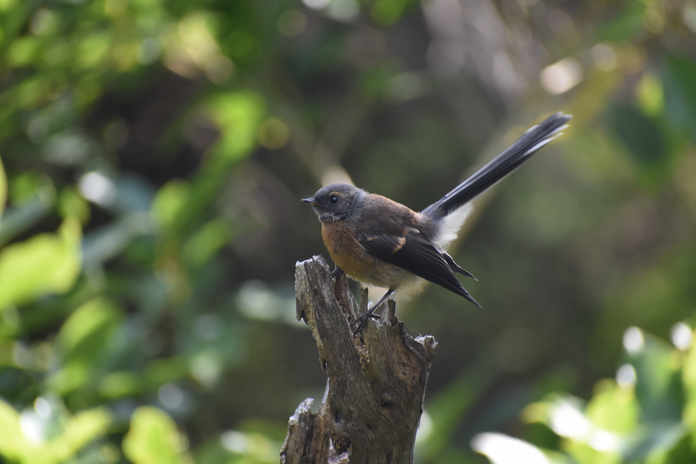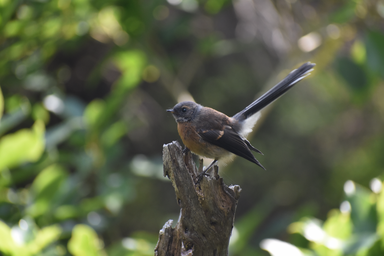New Zealand, a country almost entirely void of mammals, is known for its many colorful and unique bird species. In fact, the only mammals that are native to New Zealand are a few species of bats and marine animals. With the introduction of invasive rodents and other mammals by humans, some of these bird species have declined to dangerous numbers.
Today, there are many ongoing conservation efforts for these well-loved birds. This list includes some of my favorite New Zealand species, including a few that I got to see personally last Winter.
- The Kiwi
-
How else do you start a list of New Zealand birds than with the kiwi bird? This animal is so tied to the national identity of New Zealand that New Zealanders are commonly referred to as Kiwis themselves, and the bird’s image is prominent all across the country.
On a predator-free island called Kapiti, a local explained to me that the kiwi has spent so much of its evolution trying to become a mammal that it’s hardly a bird anymore. Its feathers are less like normal bird feathers and are more characteristic of fur. Furthermore, kiwis cannot fly, live in ground burrows, and heavily rely on their sense of smell rather than sight. They are unique to other birds in that their nostrils are actually at the end of their long bills rather than the top like most birds, as it helps them smell more easily when prodding around and foraging.
There are actually five different types of kiwis, though they are all highly elusive. They are few in numbers and have gotten very good at hiding, as their numbers declined steeply following the introduction of invasive mammals by human settlers. Now, kiwis are highly protected and cherished by New Zealanders. There is a massive effort to keep the islands free of unnaturally introduced mammals to preserve the native species.
- The New Zealand Pigeon
-
The New Zealand pigeon (the country’s only kind), or kererū, is as comical as it is cute. It won New Zealand Bird of the Year in 2018 and was described as “drunk” and “gluttonous.” This bird shares some of the characteristic green and purple colors of many American pigeons, but it’s much larger and has a big white stomach that rises into a sort of collar over its shoulders.
It’s known for its diet of large fruit, which it will swallow whole when possible. They disperse the seeds over long distances, making them very important to their ecosystems. Sometimes, these birds will eat rotting fruit that has fermented, making them “drunk” They have been known to fall out of trees on occasion and are sometimes taken to New Zealand wildlife centers by friendly citizens to sober up.
- The Takahē
-
The takahē is a very rare bird, which, not long ago, was presumed extinct before a small population was discovered in the wild. They were hunted heavily in the past and are just beginning to regain their numbers through conservation efforts.
The bird looks like a hefty, iridescent blue and green swamp hen with a large red beak. It’s the largest rail family species, which consists of similar small and medium-sized birds that live on the ground, often in wetlands or swamps. They eat a shocking diet of mostly the starchy leaf bases of tussock plants and are flightless and elusive like the kiwi.
- The Kakapo
-
The Kakapo is my personal favorite New Zealand bird. Another flightless and ground-dwelling bird, it’s the largest parrot species in existence. These birds are known for being particularly clumsy, and their best defense against predators is simply to freeze and rely on their mossy coloring to hide them.
Kakapos were taken to near extinction upon the introduction of foreign mammalian predators and are now a highly protected species that only breeds on a few small islands. Due to their low numbers, they have low genetic diversity and, therefore, low fertility. Efforts to grow and protect the Kakapo population by the New Zealand Department of Conservation can be followed on Instagram at the page @kakapo_recovery.
-
The Kea
-
The kea is a large parrot species and is the only alpine parrot in the world, with regular sightings above treeline. They are named after the sound of their call, which is a high-pitched, shrieking “keeeaaaaaa!”. Keas are a dusky olive-green color, but the underneath of their wings have many shades of orange and scarlet, which can be seen when they take off for flight.
Known for their playfulness and curiosity, keas will often approach humans and investigate buildings, cars, backpacks and more. You will see many signs where keas are found warning you not to feed them, as they can be harmed by unusual foods. These birds have been known to “car surf,” riding on people’s cars and sometimes picking at the trim. I’ve heard locals describe them as “pesky,” but they are also widely adored.
There are many unique and beautiful New Zealand birds that did not make it onto this list – the fantail, kaka, kihi, tui, and many, many more. New Zealand is a wonderful haven for so many species, and ongoing conservation efforts are crucial to their survival.



